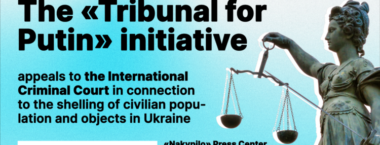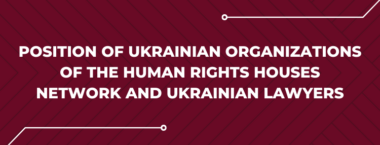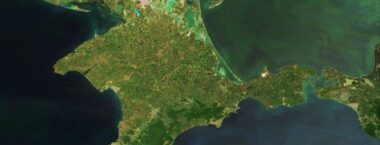Who is considered a right-wing radical? Why right-wing groups mainly target the LGBT and feminist communities? What additional dangers do hate crimes present? Can a database of hate symbols help in fighting these crimes? Researcher of right-wing movements Anna Grytsenko provides answers to all these questions.
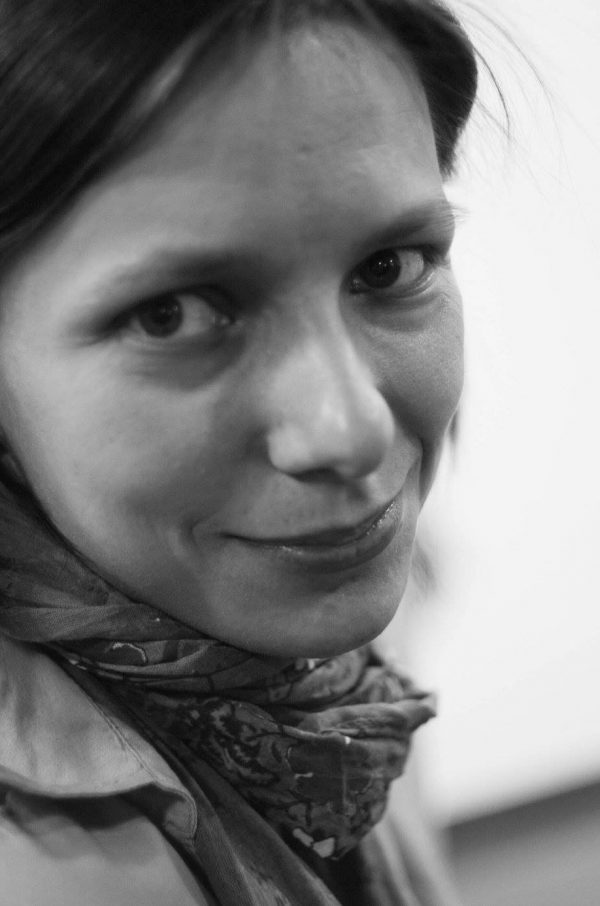
Sources like Radio Liberty, ZMINA Human Rights Center and Hromadsky Prostir call you a researcher of right-wing radical movements. Why is that and how long have you been working in this field?
I first got into this subject in 2010 while researching hate language in online media for the No Borders project of the Social Action NGO. In 2012 I wrote a chapter in the book Gender, Religion and Nationalism in Ukraine in which I analyzed the views of Ukrainian right-wing radicals on gender issues. I specialize in anti-gender movements – this definition has gotten some criticism in the academic community, but it’s generally accepted as a term for those who oppose the so-called “gender ideology”. It’s a conspiracy theory because the right to decide what one’s private life should be can hardly be called ideological, and, for that matter, the fight against SOGI-related discrimination is not an “ideology”, and definitely not some “gender” one.
Your interests also include gender issues and LGBTQI rights. In your opinion, what danger does SOGI and gender-based discrimination pose?
Any kind of discrimination is dangerous, but in today’s Ukraine right-wing groups are actively targeting the LGBT and feminist communities. There are various reasons for this. This is partly due to the homophobic heritage of the USSR, in contrast to, say, the Netherlands, where right-wing political movements are not homophobic since levels of homophobia in the Dutch society as a whole are extremely low. It’s also partially the influence of religious organizations and groups that put efforts and resources into promoting the concept of heterosexual family as the only one possible as well as their willingness to work together with right-wing groups to some extent. Thus, it was reported recently that the Evangelical Church Immanuel from Lysychansk is paying court fees for the Chernivtsi Oblast Council, which is a defendant in a case involving discrimination against the LGBT community. It’s also a known fact that Yaroslav Kulik, a priest of the Orthodox Church of Ukraine, has been urging people to attack the participants of the Equality March organized during the annual KyivPride event. Another factor is the history of national socialism which rejects both male and female homosexuality and prohibits sex education while promoting the concept of monogamous heterosexual family with children. In 1933, immediately after the rise to power of national socialists in Germany, the Institute for Sexual Science in Berlin was destroyed and its books were publicly burned. Gay men were sent to concentration camps where some of them were castrated, and gay women were often forced into providing sexual relief to soldiers and officers. The concept of heterosexual family back then was based on the realities of the nineteenth century when all women were expected to be housewives and bear as many children as possible. When looking for a partner, people were encouraged to keep “racial hygiene” in mind. When contemporary right-wingers speak of “traditional family values” that must be protected, they mean a very narrow concept of what family should be like and commit or promote violence against those whose choice happens to be different. And while, say, antisemitism has been strongly opposed since 1945 with much success all over the world, and in Ukraine it’s been all but eliminated and is considered indecent, in the case of homophobia and transphobia there’s still much work to be done, and right-wing radicals are actively focusing on this subject.
Do you agree with the statement that hate crimes are an extreme manifestation of discrimination?
The term “hate crime” is often understood to mean acts of violence committed due to the victim’s belonging to a certain vulnerable group. Consequently, such crimes are considered a greater threat to society than those committed for more mundane reasons because they also promote inequality. Furthermore, hateful acts of violence are more harmful than non-violent acts committed on the same grounds, such as refusing to hire someone. So yes, that statement is not without merit.
“It’s a common problem in Ukraine that hate crimes are not punished properly, so they are often committed by the same people whom everyone knows personally and by name”
What role do you think right-wing radical groups play when it comes to hate crimes against vulnerable groups in general and the LGBTQI community in particular?
While everyday discrimination against vulnerable groups or isolated acts of aggression can be committed by ordinary people, when it comes to premeditated crimes, especially systematic ones, they are almost always the work of a right-wing group or a person with these beliefs. It’s a common problem in Ukraine that hate crimes are not punished properly, so they are often committed by the same people whom everyone knows personally and by name. I know of an incident when a man that was on the police wanted list showed up to attack a human rights event, and the people present immediately pointed him out to the police – there’s your guy, come and take him. However, the police did nothing.
There are many different opinions as to why this is happening. What’s yours?
The concept of a “right-wing radical group” consists of two parts – “right-wing” and “radical”. And while everything’s crystal clear when it comes to radicalism – this term is usually understood as willingness to forgo human rights to achieve one’s political goals, thus practicing, promoting or at least justifying acts of violence – the term “right-wing” is much more arbitrary. As a researcher, I agree with Norberto Bobbio who defines right-wingers as those who believe that people are born unequal rather than equal (and the left, in turn, believe the opposite). Thus, crimes aimed at promoting the idea of inequality based on certain characteristics rather than at material benefits clearly fall on the right political spectrum.
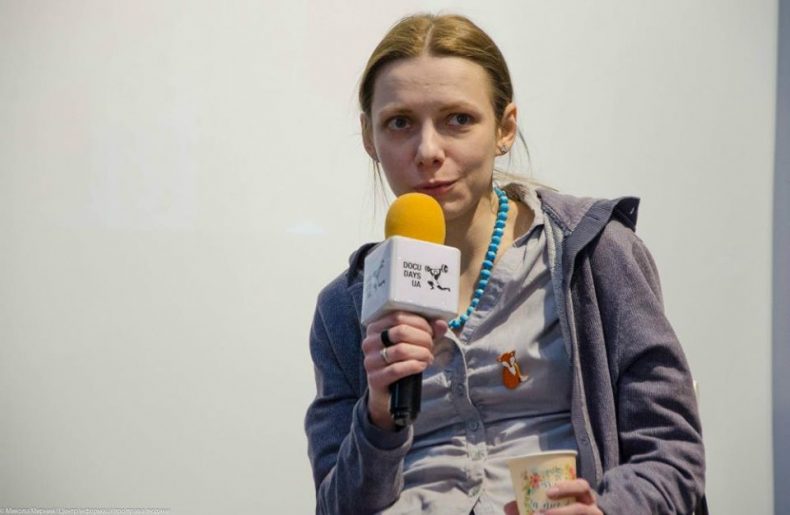
Are you familiar with the algorithm of the work of law enforcement when it comes to hate crimes?
In Ukraine, hate crimes are most often classified as hooliganism, without taking into account the motive of hate. As a result of this practice, the extra danger of such crimes to society is never mentioned in court verdicts or reflected in the severity of sentences. Not to mention that far from every case gets to the sentencing stage – many cases simply get stuck somewhere along the way.
What are the requirements for a crime to be classified as a hate crime at all stages of the investigation and trial?
At the moment we have Separate Article 161 of the Criminal Code of Ukraine, “Violation of equality of citizens based on their race, nationality or religion”. It’s the only provision that reflect the motive of hate, although the punishment this article entails is only 2 to 5 years in prison, while the prison term for the crime under Article 115 of the CC – premeditated murder – is between seven and fifteen years. The above article can be applied to minor violations of equality, but it definitely can’t ensure an appropriately severe punishment for more serious crimes than that imposed by the regular articles for the very same crimes. Some drastic changes to the entire Criminal Code are required that would add the motive of hate as an aggravating circumstance to a number of articles.
Would a database of hate symbols be of any help?
Creating a database of hate symbols is generally useful, but it’s important to remember that banning certain symbols would only lead to their replacement with other symbols – thus, the universal ban on swastikas has given rise to the use of the Celtic cross for the same purpose. Another example of this is the use of Scandinavian runes as hate symbols, which also have historical, cultural and religious significance for people that have nothing to do with right-wing radicalism, and the appropriation of these symbols by right-wingers has not eliminated their main function. After all, it’s all about context, and certain rhetorics can be used sarcastically or for awareness-raising purposes and such. What this tells me is that databases exist to be consulted rather than to provide an exhaustive list of banned symbols along with legal consequences for those who use them.
Who can be used as experts on these symbols?
Researchers of right-wing movements can act as experts in related lawsuits if a court decides that their expertise is required.
In your opinion, should a database like that be open to the public or be strictly reserved for the use by law enforcement?
I believe that a database of hate symbols is important for the general public and the media and would help them keep track of trials and be aware of the spread of hate in society. However, it could also help police prevent crime. Not all right-wing groups start with violent crimes – they are often active on the internet, using websites and profiles to spread their ideas. The issue of free speech on the internet is a topic for another time, but I can say that social networks usually don’t allow hate speech and threats, which means that they reserve the right to remove such pages and users. Being familiar with their symbols and rhetoric makes it easier to find such content on the internet and request its removal. At the same time, these pages also provide opportunities for observation and research, so immediate removal can sometimes not be necessary.
What would be the applications of this database?
These databases, just like any other source of information, can be used to combat hate speech in practice or simply to familiarize oneself with the subject.
Who should develop this database of hate symbols and train law enforcement and civil society to use it?
Researchers of right-wing groups and representatives of the public from among the vulnerable groups have the most up-to-date and accurate information on what symbols are are in use today. It is them who should be creating and updating this database as well as showing others how to use it.
Interview conducted by Maksym Petrov (UHHRU)
Prepared with the support of Freedom House Ukraine.
